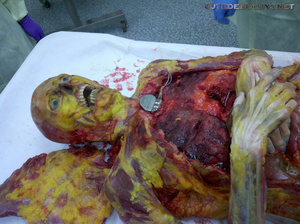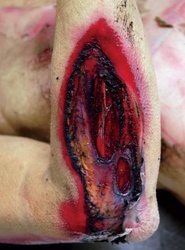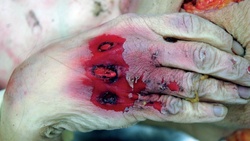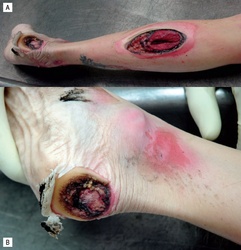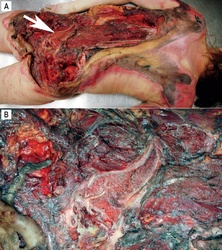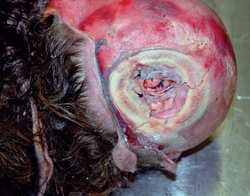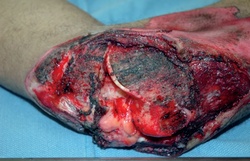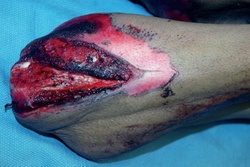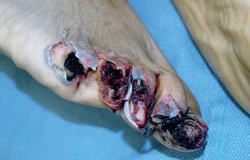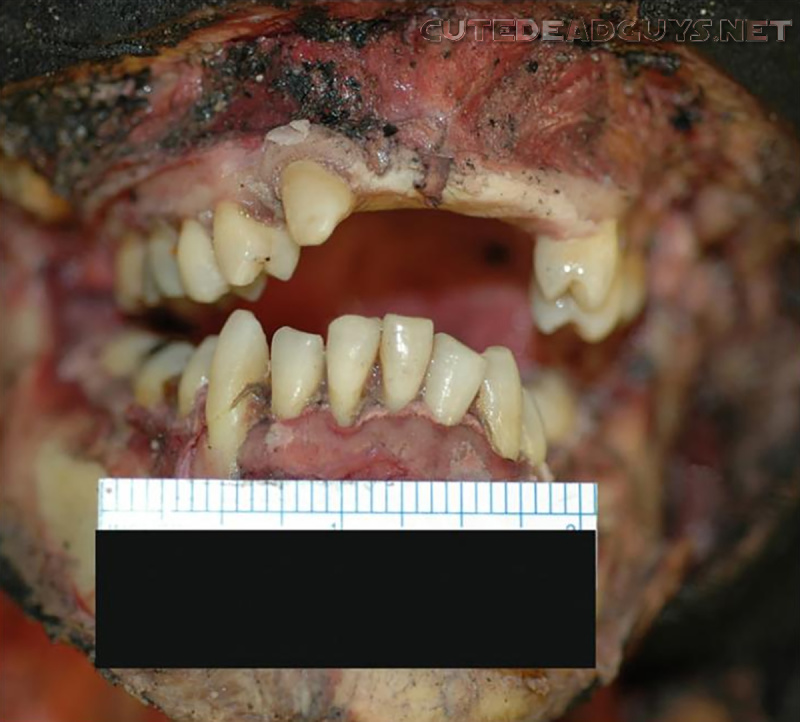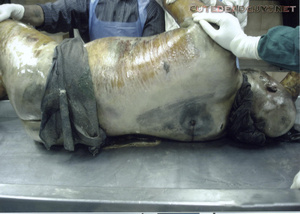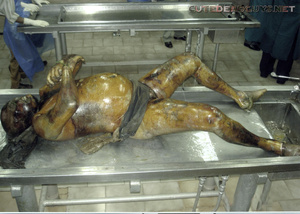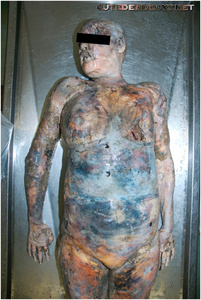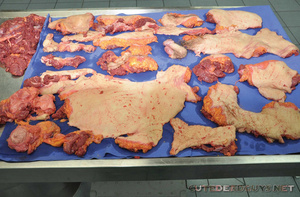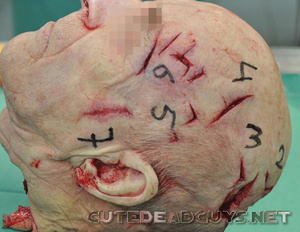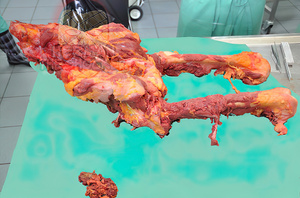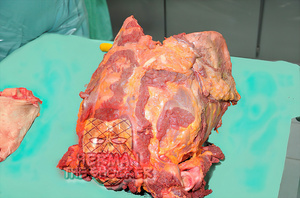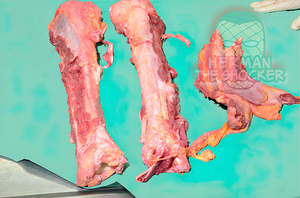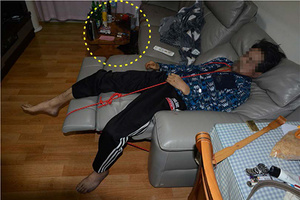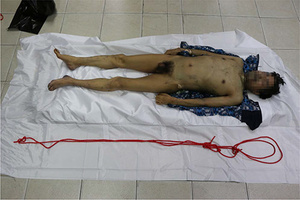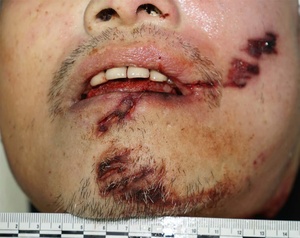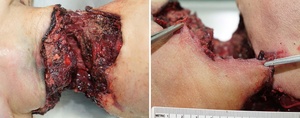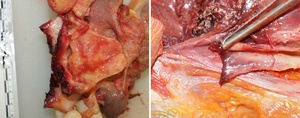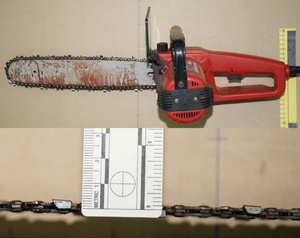An unusual case of suicide: Near decapitation by a modified table saw
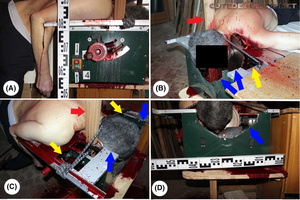


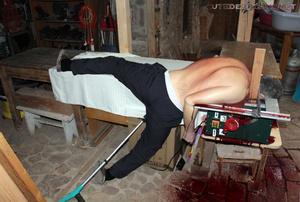
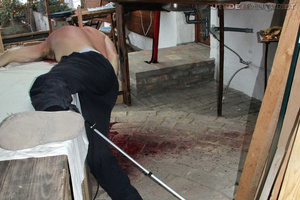
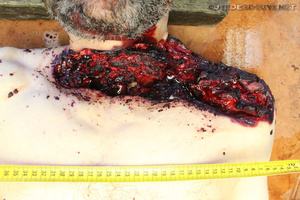
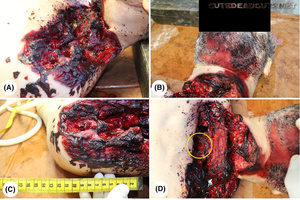
 Table saws are dangerous tools able to create severe injuries. In accidental injuries, the most commonly injured body parts are fingers (85.9%) while amputations occur in 10% of cases. Accidental neck or head injuries account for only 3.1% of all injuries. Table saws cause nearly half of all saw-related amputations. There are approximately 30,000 cases of table saw-related injuries in the United States annually, but only a few table saw-related suicides have been reported in the scientific literature. In regard to suicides, usually the head or the neck is targeted. Usually, only the soft tissues of the neck are injured because the blade height limits the cutting depth and the victim falls down from the table saw before complete transection. A rare case of suicide committed by a modified table saw that resulted in near decapitation is presented.
Table saws are dangerous tools able to create severe injuries. In accidental injuries, the most commonly injured body parts are fingers (85.9%) while amputations occur in 10% of cases. Accidental neck or head injuries account for only 3.1% of all injuries. Table saws cause nearly half of all saw-related amputations. There are approximately 30,000 cases of table saw-related injuries in the United States annually, but only a few table saw-related suicides have been reported in the scientific literature. In regard to suicides, usually the head or the neck is targeted. Usually, only the soft tissues of the neck are injured because the blade height limits the cutting depth and the victim falls down from the table saw before complete transection. A rare case of suicide committed by a modified table saw that resulted in near decapitation is presented.
A man received an email from his 51-year-old brother that he was planning to commit suicide. He rushed to his brother's house, and as he looked through the window of the wooden outbuilding, he spotted the blood-soaked body of his brother lying with his head on a table saw. He called the emergency services and turned off the outside situated fuse thus stopping the rotating saw. The locked door of the building was opened by the arriving police officers.
The body of the victim was lying prone on a table covered with a white sheet, while his neck and head were lying on a table saw situated directly alongside the table . Apart from the blood, the sheet was clean. A large removable rectangular metal plate was missing from the surface of the saw near the blade, and an adjacent large non-removable aluminum piece was also cut out. A rectangular wooden lath was installed vertically into the place of the removed metal plate adjacent to the front end of the blade, and it was wired to the framing. A semicircle metal piece was also cut out from the side of the table saw (Fig.8) The victim's neck was positioned on the blade, and the neck was pressed against it with a bungee cord that was fixed with its hooks to the frame of the saw and positioned above the neck. The face was positioned downwards above the missing parts of the table saw. The green “power on” button was pushed in. The removed parts of the saw were found in the same building on a workbench.
No sign of struggle was found during the examination of the body at the death scene. Hypostasis and rigor mortis was not observed, while the rectal temperature was 35.3°C (95.5°F). The victim previously worked as a fireman, and he was injured in service four years prior to the suicide while sliding head-first down 10 stair treads. He suffered a concussion and developed peroneal paresis and back pain. His complaints were gradually increasing and he developed depression and chronic pain syndrome.
Five months before the suicide and during his last hospital admission, he complained about severe pain. The victim was living alone; he was mostly bedridden and had limited self-sufficiency. He was using crutches to move within the house, but he was not able to leave his home without help. The victim was diagnosed with depression three years before but was not under regular psychiatric treatment prior to his death (he had not sought medical care recently). Previous psychological evaluation showed mixed anxiety-depression disorder, somatization, and conversion mechanism.
In the present case, the injuries were much more severe and deeper because the modifications of the saw enabled deeper cutting and continuous contact between the blade and the neck of the victim. The modifications probably were made purposefully for committing suicide: removing that large part from the saw would not allow firm horizontal positioning of the timber thus making firm hold not possible, and the witnesses asked by the police did not observe these modifications previously. The modifications were sophisticated; the front and superior plate were removed which allowed enough space for deeper cutting of the head, the bungee cord continuously pressed the neck vertically onto the blade, and the wooden lath prevented the neck from sliding away from the blade.
The parallel cut marks seen on the vertebrae and at the left end of the wound illustrate how the cutting depth gradually increased with every rotation of the blade while the head gradually angled down. Apart from the email sent prior to the act, multiple findings support that the victim committed suicide: the arms of the victim were close enough to the power switch to turn the switch on; the presence of the crutch indicated that the victim went to the saw on his own accord; no injuries other than those caused by the saw were found during the autopsy, and the door of the building was locked from inside.

